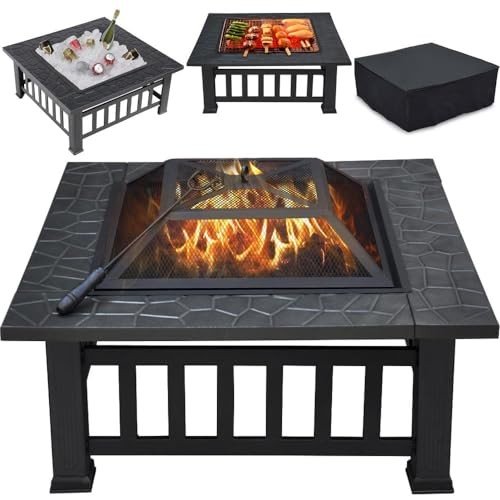Fireplaces in the UK: A Comprehensive Guide
Fireplaces have long been an essential part of British homes, offering both aesthetic charm and functional heat. As the weather condition turns chilly, the attraction of a cozy fire beckons, transforming any living space into a sanctuary. In this article, we will check out the various kinds of fireplaces readily available in the UK, considerations for installation, upkeep ideas, and answers to often asked concerns about fireplaces.
Kinds of Fireplaces
When picking a fireplace for a UK home, several alternatives are offered, each with unique functions and benefits. The following table summarizes the primary kinds of fireplaces popular in the UK:
| Fireplace Type | Description | Pros | Cons |
|---|---|---|---|
| Open Hearth | Traditional fireplaces that burn wood or coal, supplying a rustic feel. | Genuine atmosphere; great heat distribution | Less energy-efficient; requires chimney maintenance |
| Gas Fireplaces | Use gas or gas; can be direct vent or ventless. | Instant heat; easy to operate; cleaner burning | Initial setup expense; may require gas line |
| Electric Fireplaces | Imitate a flame using LED lights and supply heat through electricity. | Safe; simple to install; no flue needed | Less genuine; higher operating costs |
| Wood-burning Stoves | Closed-system fireplaces that burn logs, using high efficiency. | High heat output; eco-friendly when using sustainable wood | Limited aesthetic compared to open hearth |
| Bioethanol Fireplaces | Eco-friendly alternative that burns bioethanol, creating genuine flames. | No chimney needed; versatile style options | Can be costly to operate; minimal heat output |
Benefits and drawbacks of Each Type
Open Hearth
- Pros:
- Provides character to any living space.
- Efficient heat circulation due to open flames.
- Cons:
- Less energy-efficient and more smoke than modern options.
- Requires regular cleaning and maintenance of the chimney.
Gas Fireplaces
- Pros:
- Easy to manage and operate with the flick of a switch.
- Cleaner option with less soot buildup.
- Cons:
- Requires a gas supply and installation costs can be high.
- Might not supply the same ambiance as a traditional fire.
Electric Fireplaces
- Pros:
- Simple setup without any chimney or flue required.
- Comes in numerous designs, resembling traditional choices.
- Cons:
- Lacks the realism of real flames and can end up being pricey with constant use.
Wood-burning Stoves
- Pros:
- Highly efficient and creates substantial heat.
- Renewable resource when using responsibly sourced wood.
- Cons:
- Requires additional area for log storage and routine upkeep.
Bioethanol Fireplaces
- Pros:
- Flexible placement due to no need for traditional venting.
- Clean-burning and minimal effect on indoor air quality.
- Cons:
- Can be less economical for consistent usage compared to gas or wood.
- Heat output is less efficient for bigger areas.
Installation Considerations
When setting up a fireplace in a UK home, numerous aspects must be considered:
- Building Regulations: Ensure compliance with regional structure codes and safety regulations.
- Chimney and Flue: Determine the need for a chimney or flue system based upon the type of fireplace selected.
- Ventilation: Proper ventilation is essential for safety, particularly with gas, wood, and bioethanol alternatives.
- Place: Consider the very best location for the fireplace to maximize heat circulation and visual appeal.
- Professional Help: Engaging an expert installer can guarantee a safe and accurate setup customized to the particular kind of fireplace.
Maintenance Tips
Regular maintenance of a fireplace is essential for both security and effectiveness. Follow these guidelines to keep your fireplace in peak condition:
- Chimney Sweeping: Have your chimney expertly swept at least when a year to avoid obstructions and decrease fire threat.
- Inspect for Damage: Regularly look for leakages, cracks, or damage, specifically in gas and wood-burning fireplaces.
- Tidy the Surroundings: Ensure the area around the fireplace is free from dust and flammable products.
- Inspect Carbon Monoxide Detectors: Test detectors regularly, particularly in homes with gas-burning home appliances.
- Shop Wood Properly: If utilizing a wood-burning stove, store wood in a dry area to reduce moisture material.
Often Asked Questions
What is the best type of fireplace for a small room?
For small areas, electric fireplaces or bioethanol designs are frequently suggested due to their smaller sized size, safety features, and aesthetics.
Are electric fireplaces less expensive to run than gas?
Electric fireplaces usually have a lower upfront expense, but depending upon electricity rates, they can be more expensive to run long term compared to gas.
Do wood-burning stoves require a lot of upkeep?
While they do require some upkeep, such as cleansing and routine chimney sweeper, many house owners discover that modern wood-burning stoves are effective and fairly low maintenance compared to traditional open hearths.
Can I install a gas fireplace myself?
While some house owners may attempt DIY setup, it is highly recommended to employ a professional for gas fireplace installations due to safety issues and regulative compliance.
How can I maximize the heat output of my fireplace?
To optimize heat output from any fireplace, consider the following:
- Keep windows and doors closed during usage.
- Usage heat-efficient logs or fuels.
- Make sure proper airflow around the fire.
- Use fans or blowers that can distribute warm air throughout the space.
Fireplaces stay a cherished component within UK homes, offering warmth, charm, and a welcoming environment. Provided the range of choices and their unique functions, house owners can pick the best fireplace to complement their living space while ensuring safety and performance. With Buy Fireplace and a clear understanding of the setup requirements, anybody can enjoy the appeal and convenience of a fireplace for several years to come.

